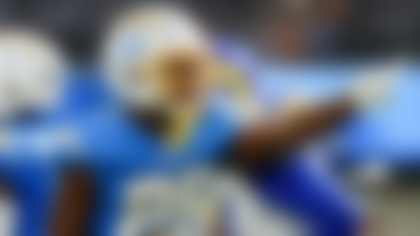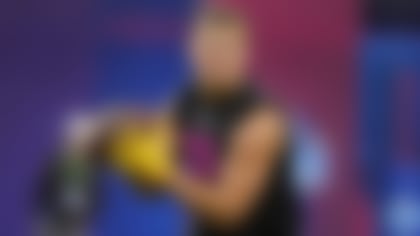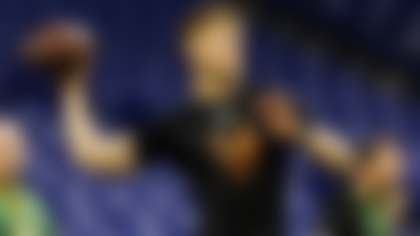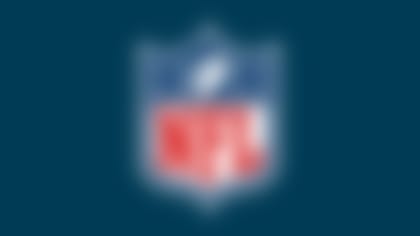By Bill Bradley, contributing editor
Two plays during the St. Louis' Rams victory last Sunday over the San Francisco 49ers at Levi's Stadium made for a tough day in the Art McNally Gameday Central.
The field-goal return attempted by Tavon Austin of the St. Louis Rams was not a safety because it was an example of how forward progress is used, according to Dean Blandino, NFL vice president of officiating. And 49ers quarterback Colin Kaepernick's goal-line fumble didn't have enough visual evidence to turn it into a touchdown.
Blandino, speaking during Friday's Officiating Review video for the media, said that while Austin was tackled in the end zone, he already had advanced the ball beyond the goal line when he was tackled.
"You'll see the player start to bring the ball out of the end zone, bring the ball into the field of play," he said. "If the ball goes back into the end zone -- either the player takes it into the end zone on his own or he's tackled with the ball over the goal line and then driven back into the end zone -- it would be a safety.
"But if he's tackled in the field of play and his forward progress is stopped in the field of play with the entire ball beyond the goal line, and then he's driven back into the end zone, then it would not be a safety."
Blandino said the officials ruled that when Austin was first hit, he was in the field of play and then driven back. He said Austin was first hit by 49ers tight end Derek Carrier while the ball was past the goal line.
"If any part of that ball is breaking the plane (of the end zone), this is a safety."
He said the call was difficult and could have used a video angle along the goal line for a more conclusive decision.
"On the field ruling was forward progress in the field of play," he said. "It was not indisputable that the call on the field was incorrect. So the call stood."
Later in that game, Blandino also reviewed the game-ending fumble by Kaepernick. The call on the field was Kaepernick fumbled before he crossed the goal line.
"What we're looking for is a clear shot of the ball breaking the plane of the goal line within Kaepernick's possession, prior to him being down and prior to him losing it," Blandino said. "That's what we need to see in order to overturn this ruling on the field.
"There was not indisputable visual evidence to do so."
He said the best shot that shows Kaepernick having possession does not display his knees or the goal line.
"There's not enough evidence to overturn the ruling on the field," Blandino said. "It has to be clear. It has to be definitive.
"Had this been ruled a touchdown, the call would have stood. There just isn't clear evidence to refute the ruling on the field. That's why the ruling of a fumble stood."



